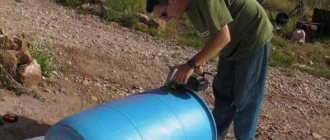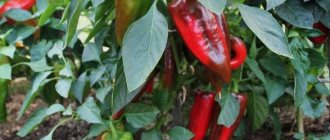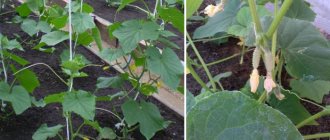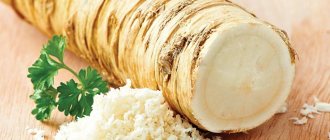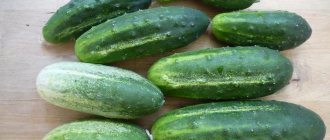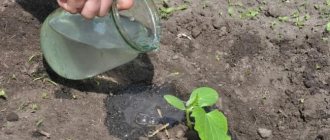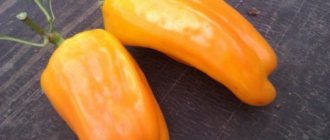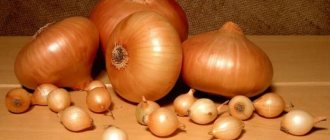It is worth starting the description of the cucumber variety Claudius f1 with the fact that, according to the ripening period, it belongs to the mid-season. A cucumber grows in 45-50 days. This hybrid was created in 1999. Claudia is adapted for cultivation in the North Caucasus and Middle Volga regions. Today, there are many more modern modifications of the presented variety - Claudine f1, Claudia Agro f1, etc. But many gardeners still prefer the proven classic hybrid.
Description of Claudius cucumbers
Cucumber Claudia f1 is a stress-resistant parthenocarpic hybrid originally from the Netherlands, prolific and easy to cultivate. Its yield in greenhouse conditions is about 27 kg/m². The plant has the following characteristics:
- The bush is indeterminate, medium branched, powerful, medium leafy, with long vines and a strong root system.
- The leaves of the variety are medium in size, heart-shaped, practically do not ripple, and have a solid, dark green color.
- The cucumber itself is short, maximum length 11 cm, average weight 75-80 g, elliptical in shape.
- The skin of the hybrid Claudius f1 is thin, highly tuberous, dark green in color, with thick whitish pubescence.
Cucumber feels better in greenhouses, or well-heated greenhouses. This variety is able to tolerate small temperature changes. However, cucumber loves heat very much and can die during prolonged frosts.
Reviews
Gennady, 48 years old
I planted Claudia F1 for the first time on the advice of a neighbor and did not regret it. The quality of the fruit is simply excellent. They are good both fresh and pickled. 2 years ago I learned that you can add feathers to the ground when forming beds. They trap the cold coming from unheated soil, and when decomposed, they fill the soil with selenium. I liked the result of the experiment. The cucumbers grew faster, and the harvest was generous.
Inna, 35 years old
I am completely satisfied with Claudius’ hybrid and have no plans to change it for any other. I like the pleasant taste of the fruit and the lack of bitterness in them. I’m especially pleased with the versatility of using vegetables in cooking. When caring for cucumbers, I don’t fertilize them myself and don’t mix any components. I just buy the “Ideal” product, dilute it in an amount of 500 ml per 5 liters of water and water the bushes with it. The harvest is always good.
The advantages of Claudia F1 include high productivity and unpretentiousness, the pleasant taste of vegetables, as well as the possibility of using them in pickling. Among the disadvantages are the inability to grow plants from personally collected seeds and susceptibility to mosaic and powdery mildew. Thus, the hybrid has many more advantages and they more than cover the disadvantages.
Pros and cons of the variety
Claudia f1 has been consistently popular among vegetable growers for two centuries. The latter note the fertility, excellent taste and ease of care of this variety. For sunny, warm regions, this is an ideal cucumber that consistently produces high yields without requiring any special financial or labor costs.
pros
The cucumber in question has many positive aspects. Among the most important advantages of Claudia f1:
- yield - in decent conditions and subject to agricultural technology, the variety can produce up to 27 kg/m²;
- excellent taste and versatility - cucumber has an excellent sweetish taste and light fresh aroma, it is suitable for any dish and preservation;
- stress resistance - the hybrid crop will not die after night temperature changes or short drought;
- shade tolerance - the cucumber does not need a lot of sunlight, it feels comfortable in shaded areas;
- high immunity – Claudia has complex resistance to most common fungal diseases;
At the same time, the variety is not difficult to cultivate; it can be grown both on an industrial scale and in small gardens.
Minuses
Few negative aspects of the variety have been identified, and most of them are not so significant. Among the most sensitive flaws that Claudia f1 can detect:
- thermophilicity - cucumber loves heat very much, for successful ripening it needs an appropriate climate - during prolonged cold spells the plant stops developing and bearing fruit;
- vulnerability to bacteriosis and cucumber mosaic (unlike varieties such as Benefit) - Claudia needs pre-planting treatment with antibacterial drugs and maintaining ideal cleanliness in the greenhouse;
- parthenocarpicity - the seeds of the hybrid are not collected by hand - they stop developing in the milk stage.
The cucumber in question has very delicate foliage, which must be protected from sunburn and mechanical damage.
Advantages and disadvantages
The Claudia cucumber variety is distinguished by its durability in garden beds, and this is evidence that the hybrid has many advantages.
- Stable yield;
- Excellent taste properties;
- Suitability of hybrid fruits for pickling;
- Bundle type of fruiting of cucumbers;
- High commercial performance of the variety;
- Cultivation of the hybrid in open and closed ground;
- Unpretentiousness of the plant;
- Resistance to pathogens characteristic of cucumbers.
Among the disadvantages of Claudius cucumbers are the following:
- The hybrid form of the cucumber does not allow gardeners to collect the seeds themselves;
- Susceptibility to cucumber mosaic and powdery mildew, which is inherent in most cucumber varieties.
Landing Features
The variety is more adapted for greenhouse cultivation, but in regions with a favorable climate, cucumbers can also be planted in open ground. The main thing that Claudia f1 requires is sufficiently warm and nutritious soil and standard care.
Landing dates
They begin to plant seeds of this variety for seedlings from the first half of April - in a greenhouse, from the last days of this month. The optimal temperature for ripening the Claudia hybrid is 19°-20°. The soil temperature should not be lower than 16° at a depth of 10 cm.
In open ground, the cucumber is immediately covered with film until the last spring frosts have passed.
Soil preparation
Preparation of the plot for cucumber begins in September. The soil for the variety is dug up at a depth of 45-50 cm, treated to remove weeds and sprayed with a weak solution of potassium permanganate. The second stage of preparation is 3-4 days before planting. Claudia f1 loves well-warmed soil - for this it is mulched with hay or a thin layer of humus. Then the soil for the cucumber is fertilized with superphosphate, or urea solution.
Planting seeds
Claudia is planted with seeds mainly in open ground. For greenhouses, cucumber is sprouted into seedlings. For this, separate peat humus containers are used - 3 seeds in each, buried 2 cm. As soon as the sprouts of the variety begin to sprout, you need to adjust the temperature in the room to about 18-20. Water the plantings of Claudia f1 once every 2 days - the main thing is that the soil around the sprouts does not dry out or get wet.
Planting seedlings
The variety's seedlings ripen on the 25th day after seeding. Claudia f1 is transferred to the garden bed when 3 full leaves appear on the sprouts. 6-7 days before transplanting, you need to start hardening the cucumber - take it out into the fresh air for 20-30 minutes so that the plants quickly adapt to climatic conditions.
It is worth noting that Claudia has fragile roots, especially at the seedling stage, so you need to transfer the sprouts with a large lump of earth.
Planting scheme
Cucumbers are planted in semi-open, spacious areas, protected from sharp gusts of wind. It is important that water does not accumulate in the soil during the rainy season. Claudia f1 seedlings are buried in the ground only 4-5 cm. The ideal distance between plants is 30-35 cm. The recommended width of the space between adjacent rows of the variety is 70 cm. The cucumber will grow well in a bed 20-22 cm high, plant it in a row - it can be horizontally or vertically - depending on the level of shading of the area for the variety.
Cucumber “Claudia”: reviews from those who planted this variety
Gardeners in many regions of Russia are engaged in growing this variety, and then leave their reviews on forums. Some of the reviews about the Claudius hybrid are presented below:
Ella, 39 years old, Nizhny Tagil:
In our region, such a heat-loving crop as cucumbers is best grown in greenhouse conditions. I have been growing Claudia gherkin cucumbers for several seasons now. I like the fairly rapid ripening of the fruits, the plants do not require special care, and we use the harvested crop not only fresh, but also pickle and salt it.
Tatyana, 40 years old, Ryazan:
I grow this variety in beds in the garden. Although the variety requires shaping and tying to trellises or cucumber mesh, it is easier to care for the bushes and it is easier to collect ripe greens. The yield is quite high, but my neighbors planted these cucumbers in a greenhouse and say that their yield of this hybrid is much higher than what I have in my open ground beds.
Stella, 50 years old, Tambov:
This is not the first year I have been planting the Claudia cucumber variety. As a result, we collect ripe cucumbers within 1.5 months after germination, and small ripe fruits are ideal for preservation.
Inna, 49 years old, Voronezh:
This is not the first season I have been growing early varieties of cucumbers. Basically, I use the harvested crop for further sale, since my cucumbers appear earlier than others. Therefore, I also plant the Claudius hybrid in the beds, since the harvest of this variety has an excellent presentation and good taste. Last year I planted this hybrid in a greenhouse and harvested more than 2 times more than I had previously collected in the garden from the same variety.
CHOOSE!
• The best varieties and hybrids of cucumbers for 2021 for greenhouses
Elena, 46 years old, Volgograd:
I would like to note the friendly ripening of the harvest of the bushes of this variety. Claudius's gherkins are delicious, without any bitterness at all, even if they were not picked in time. And the vines bore fruit almost all summer, but they had to apply fertilizer every 12-14 days.
chwedwa02:
I have been planting this variety of cucumber for a very long time, I still remember my grandmother planting it.
With the Claudia cucumber there is never a bad year. The cucumber is without bitterness; when pickled, it turns out crispy and without voids. I think this is one of the best varieties for pickling. I really like that the variety is finely tuberculate, and its ripening is average. The cucumber is a self-pollinating gherkin approximately seven to ten centimeters. I first plant seeds at home for seedlings, but if you plant Claudia in a greenhouse and not in open ground, you can plant the seeds directly into the greenhouse. https://otzovik.com/review_382159.html
eleersho2014:
I am a gardener with only 5 years of experience.
Although I always plowed in other people’s gardens, I didn’t feel any joy. And at 50, I got the bait: I want a garden, a vegetable garden and a greenhouse! The question arose about choosing a variety of cucumbers - I planted whatever I could find. I just discovered the Claudia F1 variety! Neat cucumbers, slightly sweet. Small pimples, small seeds. And eat well, and for pickling. And in combination with their small neighbors - Cherry tomatoes - it’s simply great. The neighbors praise me. and I am pleased. The whole family loves these cucumbers, my daughter especially praises them. And the one-year-old grandson, who is still toothless, has already appreciated it - he spends his time with pleasure. In the Urals we have gardens and vegetable gardens that are a joy! Everything grows, especially in greenhouses. https://otzovik.com/review_1271729.html
Galka58:
Every year, for about 15 years now, I have always planted cucumbers of the “Claudia” variety; the seeds were the first, then their quality deteriorated sharply, and I switched to seeds from other companies.
Previously, there were 15 seeds in bags, then 10, and now they put 8 seeds. This cucumber variety is the best for me at the moment. Cucumbers never outgrow, there are no voids, the seeds are small, soft, the flesh is slightly creamy in color. Cucumbers have stable and long-term fruiting. When the foliage of other varieties has already turned yellow, “Claudia” is still green and continues to delight with cucumbers. https://irecommend.ru/content/na-protyazhenii-mnogikh-let-obyazatelno-sazhayu-klavdiyu
Thanks to its positive qualities, the cucumber hybrid Claudia is becoming increasingly popular among Russian vegetable growers, who grow it not only for personal needs, but also for further sale of the harvested crop.
Care
Claudia f1, according to the description, will not require complex agricultural techniques from the gardener. All the variety needs is periodic abundant watering, timely fertilizing, loosening and regular weeding of weeds. The cucumber will also require standard bush formation and virus prevention.
Watering
This variety needs daily watering, and in particularly intense heat - twice a day. It's best early in the morning or after sunset. Water the cucumber with settled water heated to 25°. The watering method is drip, strictly under the bush, without touching the foliage - it is very easy to burn it. But Claudia f1 does not like heavy rains - during rainfall it is better to cover the plantings with film. If you allow water to accumulate at the roots, you can provoke infection of the root system with bacteria.
Garter and bush formation
Claudia requires timely gartering and stepsoning. The main procedures for the formation of bushes of the variety:
- The cucumber is tied to trellises when the sprouts reach 20-22 cm in height.
- The side shoots of the Claudia f1 variety of the first order are cut at a level of 50 cm, of the second level - at 15 cm.
- The top of the stem is pinched as soon as the cucumber reaches a height of 1-1.2 m.
- The central stem is blinded at a level of 50 cm - shoots, ovaries and flowers are removed, if necessary - 2-3 times per season.
All this is done to ensure that the variety spends energy on the formation of ovaries, and not the growth of additional shoots.
Top dressing
This variety does not require frequent feeding. 3-4 times per season will be enough. Fertilizers are applied to cucumbers for the first time at the beginning of flowering. A solution of superphosphate, potassium sulfate and urea is used as a top dressing. All other fertilizers are applied from the beginning of the formation of the ovaries, with an interval of 8-10 days. Claudia f1 prefers fertilizers such as nitrophoska, manure, azophoska and sodium humanate. Fertilizer is applied at the root, or in shallow holes dug at a distance of 10-15 cm from the bushes - otherwise Claudia may receive serious burns.
Hilling
The first time the cucumber is hilled is immediately after planting - sprinkled with soil and mulch to half its height. Claudia will need all subsequent hillings after heavy rainfall - 40-45 cm. In dry summers, plants of the variety are hilled every week. Loosening is no less important. Claudia f1 requires loosening every day by 10-15 cm.
Productivity
Cucumber Claudia F1 is a hybrid with bunched fruit set. Three ovaries are formed in one leaf axil. The first ripening of fruits is massive. With proper care in open ground, 1 m² can produce up to 10 kg of fruit, and in greenhouses - about 20-25 kg of cucumbers of good commercial quality. Productivity of the variety is 80-90%.
Claudius F1 cucumbers bear fruit for a long time, until the onset of severe cold weather. Young cucumbers are collected 1-2 times a day. A characteristic feature of the hybrid is the early yield of the crop. The first yield of commercial products varies in all climatic regions and averages 30-100 centners per hectare.
Diseases and parasites
Claudia f1, based on the description, is only afraid of viral diseases. The variety has excellent immunity against fungi and most rots. The cucumber is not too afraid of parasites - these plants are not of particular interest to them. To avoid diseases, be sure to observe crop rotation and keep the beds immaculately clean.
Bacteriosis
Cucumber is affected by this disease in conditions of high humidity and elevated air temperatures. Angular rotting spots appear on the leaves, and brown ulcers appear on the cotyledons. For prevention, the bushes of the variety are fertilized with potassium salt and try not to thicken the plantings. To combat the Claudia virus f1, it is sprayed with Abiga-Pik, Bayleton, or Kuproxat. Infected leaves of the variety must be removed and burned.
Cucumber mosaic
The disease affects cucumbers in poorly ventilated, too hot greenhouses. The mosaic is characterized by the appearance of light green or brownish shapeless spots on the leaves of the variety. At the first signs of infection, Claudia f1 plants are treated with a whey solution with the addition of a few drops of iodine. All affected shoots must be removed and the sections treated with slaked lime. For prevention, the cucumber is sprayed with a solution of copper sulfate.
Fusarium
The disease develops due to cold watering and night frosts. It does not appear immediately - first the cucumber begins to lag in growth, then its leaves gradually turn yellow and dry out. For prevention, the seeds of the Claudius hybrid are treated with Planriz or Trichodermin before planting. If the variety has already begun to hurt, the plantings are sprayed with an infusion of wood ash or garlic. For severe damage, fungicides are used.
Diseases and pests
Cucumbers of the Claudia variety are resistant to many diseases, including bacteriosis, brown spot, gray mold, cladosporiosis, sclerotinia, anthracnose, and fusarium wilt. However, they cannot resist powdery mildew, root rot, white and green mosaics.
And in the world of insects there are many species that significantly harm the variety, affecting the stems, roots, leaves, fruits, and depriving the plant of its vitality.
Table: diseases that a hybrid can get
| Disease | Probability | Signs | What and how to treat | Preventive measures |
| Powdery mildew | At high air humidity. | White or grayish coating on the top and bottom of the leaves, which curl and die. |
|
|
| Root rot | It can get sick when watered with cold water or in cool and damp weather. | Wilting of leaves. |
|
|
| Green mosaic | Occurs when plants are infected by sucking pests. | This is a viral disease in which leaves and fruits turn yellow in spots, wrinkle and fall off. Carried by harmful insects. | The virus can only be destroyed by burning diseased plants. |
|
| White mosaic | Occurs when plants are infected by sucking pests. | Viral disease. Leaves and fruits become covered with spots, which gradually cover the entire leaf. | The virus can only be destroyed by burning diseased plants. |
|
Photo gallery: diseases of cucumbers of the Claudia F1 variety
Mosaic stars on a cucumber leaf - a symptom of cucumber mosaic disease
Plants affected by cucumber mosaic
This is what a cucumber leaf looks like when it is affected by powdery mildew.
No one will eat the fruits of a plant infected with green mosaic.
The leaf was destroyed by the green mosaic
Table: the most dangerous pests of cucumber Claudius F1
| Name | Description of the pest and symptoms of infection | How to destroy | Prevention measures |
| Spider mite | Small insects living on the underside of leaves. They entwine plants with webs and suck out the juices from them. The leaves turn yellow and dry out. | Spray with Fitoverm or Akarin solution (according to the instructions for the drug). | Spray plants for prophylaxis with Fitoverm once every 10–14 days. |
| Slugs | Clams without shell. They are most active in damp, humid weather. They feed on cucumber leaves and fruits, gnawing holes in them. |
|
|
| Root-knot nematodes | Small worms up to 1.5 mm long. They secrete poisons that cause swellings and growths to form in the roots. Eggs are laid in them. The hatched larvae feed on the roots of diseased plants. Most active in hot weather. Damaged roots break, darken, the bush weakens and is easily affected by other diseases. | Watering with Fitoverm solution. |
|
| Medvedka | An insect up to 6 cm long. In search of food, it digs through underground passages, biting the roots and bases of plants along the way. | Treat the soil with Phenaxin or Thunder (according to the instructions). |
|
| Whitefly | Light small butterflies. On the underside of the leaf, larvae hatch from laid eggs and attach themselves to the leaf, absorbing nutrients. The leaves wither and dry out. |
|
|
| Aphid | Sucking small translucent insects. They reproduce quickly. They spread viral diseases. Aphids secrete honeydew, a sticky substance on which sooty fungi reproduce. The development of aphids is facilitated by ants that feed on honeydew. |
|
|
| Thrips | Thrips are small insects. The leaves affected by them become covered with yellow drying spots and become sticky from the honeydew secreted by the insects. Flowers become deformed and fall off, the plant weakens. | Treat plants with Fitoverm solution according to instructions. | Once every 10–14 days, spray the plants with Fitoverm solution. |
| Cucumber mosquito | Insect larvae are preserved in manure and humus. When attacking plants, they gnaw long passages in the roots and inside the stems. If there are more than 50 larvae on the plant, it will die. Adult mosquitoes are carriers of viruses and ticks. | Treat plants with Fitoverm solution according to instructions. |
|
Video: how to fight whiteflies in a greenhouse
Photo gallery: cucumber pests
A small whitefly butterfly produces huge offspring that can destroy the entire crop of cucumbers in a greenhouse
Whitefly larvae suck all the juices from cucumber leaves
In greenhouses with cucumbers, glue traps are hung against whiteflies
Nematode larvae multiply in thickenings on cucumber roots
The underside of a cucumber leaf covered with cobwebs is a sure sign of spider mite infestation; the spider mites themselves are also visible
Plant weakened by aphids
The lower part of the cucumber leaf was attacked by thrips
Slugs can destroy most of the crop
The mole cricket is a malicious garden pest that leaves nothing behind, including cucumbers.
Harvesting and storage
Claudia f1 reaches maturity by mid-to-second half of June. The green variety is harvested every day, but it can be done once every 2 days - this hybrid is not prone to yellowing and overgrowth. A cucumber that has reached 10-11 cm is carefully cut in the morning, before watering, leaving the stalk on the bush. You should try not to tear the mustache and carefully move the shoots away while harvesting.
Claudia is stored well - about 7 days. On the bottom shelf of the refrigerator, at a temperature of 10°-11°, the cucumber retains its characteristic taste and fresh aroma for a long time. It is better to preserve them on the day of collection, rolling them into small jars. The variety also tolerates transportation without much loss - the main thing is to prevent the greens from getting wet on the road.



